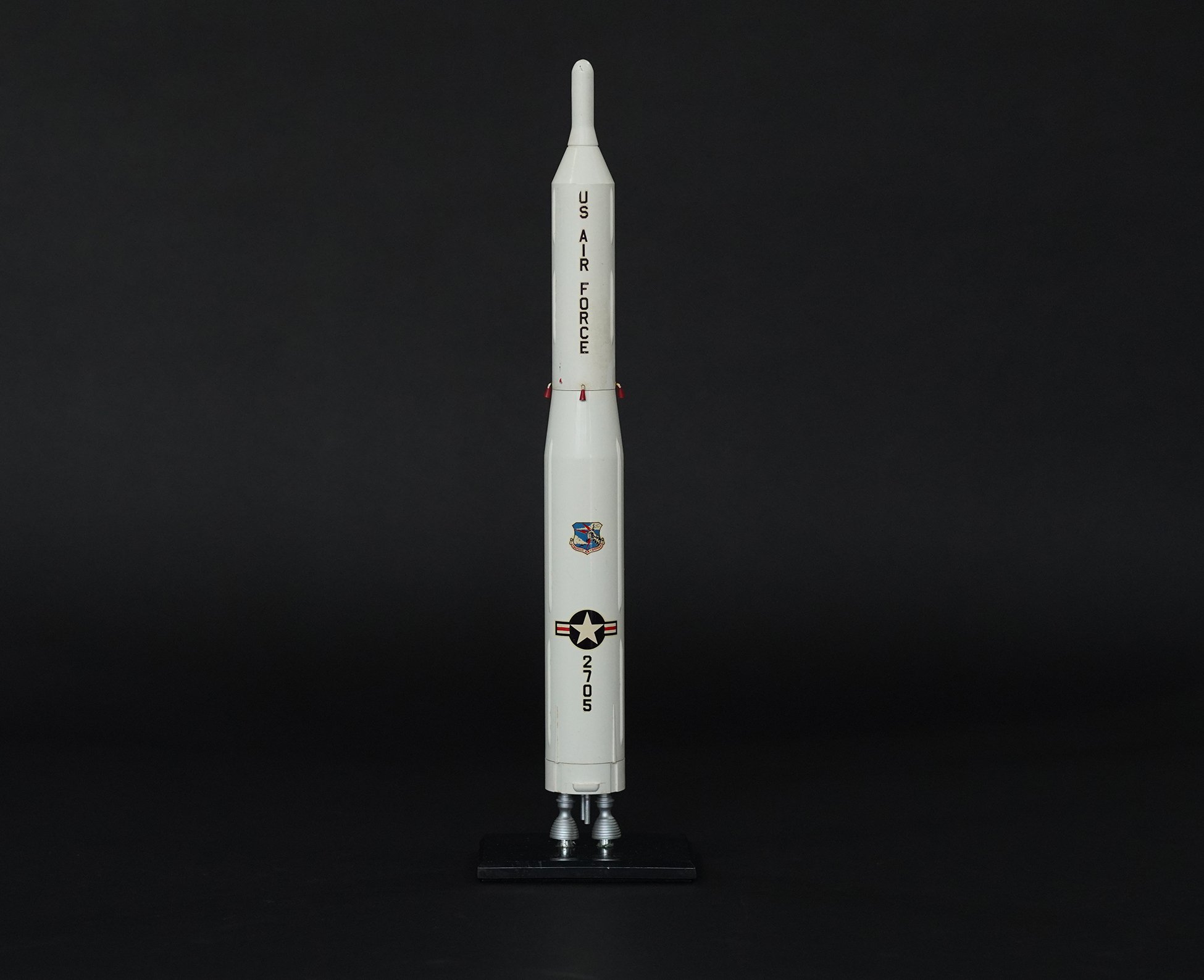Rare 1962 Titan SM-68 ICBM Contractor Model Martin
Rare 1962 Titan SM-68 ICBM Contractor Model Martin
A very rare Martin contractor model in very good condition. The piece comes apart to show the two rocket stages and is mounted on a weighted base marked Titan SM 68 Martin. The resin model shows signs of wear but overall in very good condition. An important and transitional design in nuclear ballistics. See details below via National Air Force Museum
‘Entering operational service in 1962, Titan I was the United States' first multistage ICBM (Intercontinental Ballistic Missile). Incorporating the latest design technology, Titan provided an additional nuclear deterrent to complement the U.S. Air Force's Atlas missile. Though the SM-68A was operational for only three years, it was an important step in building the Air Force's strategic nuclear forces.
The first American ICBM based in underground silos, Titan I gave USAF managers, contractors and missile crews valuable experience building and working in vast bunkers containing everything the missiles and crews needed for operation and survival. These early silos, however, had certain drawbacks. First, the missiles took about 15 minutes to fuel, and then had to be lifted to the surface on huge elevators for launching, which slowed their reaction time. Rapid launching was crucial to avoid possible destruction by incoming missiles, even though Titan shelters were designed to withstand nuclear blasts. Second, the missiles' placement close together in groups of three --necessary because they shared a single ground-based radio guidance system -- made them vulnerable to nuclear attack. All-inertial guidance, which does not depend on ground computers, was not yet perfected.
In its brief career, Titan I equipped six squadrons of nine missiles each, in Colorado, Idaho, California, Washington state and South Dakota. Although Titan I's two stages gave it true intercontinental range and foreshadowed future multistage rockets, its propellants were dangerous and hard to handle. Super-chilled liquid oxygen oxidizer had to be pumped aboard the missile just before launch, and complex equipment was required to store and move this liquid. Kerosene fuel also was pumped aboard just before launch.
Titan I allowed USAF missileers to perfect techniques for efficiently operating strategic missile facilities spread across several states and requiring great coordination and skill. Still, the SM-68A was a transitional missile. Even as the USAF deployed 54 Titan Is on operational alert from 1963-1965, it prepared to deploy more advanced Titan IIs in their place. Later missiles, like Titan II, used safer fuels and more advanced guidance, but followed the SM-68A example of underground basing and multiple stages.’
TECHNICAL NOTES:
Warhead: Single nuclear warhead in the megaton range
Re-entry vehicle: Avco Mark 4, ablative
Engines: (1st stage) Aerojet LR87-AJ-1 of 300,000 lbs. thrust; (2nd stage) Aerojet LR91-AJ-1 of 80,000 lbs. thrust
Propellants: RP-1 kerosene fuel and liquid oxygen oxidizer
Range: 6,300 miles
Length: 98 ft.
Diameter: 10 ft.
Weight: 110,000 lbs. fueled:









